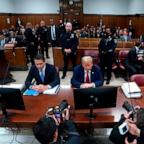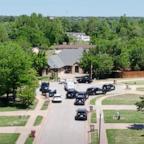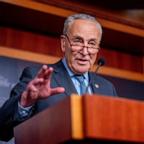Inside Obama’s Decision to Leave More US Troops in Afghanistan
Some 8,400 American troops to remain through the end of the year.
— -- President Obama has announced that 8,400 U.S. troops will stay in Afghanistan through the end of 2016 in response to a resurgent Taliban that is destabilizing the area -– a change to the previous withdrawal plan that would have reduced the force there to 5,500 by year’s end.
Just last month, Obama approved broader authorities for the U.S. military in Afghanistan that on a case-by-case basis will allow American forces to accompany conventional Afghan troops and possibly allow airstrikes in support of Afghan troops to help them seize a battlefield advantage.
How will these changes in troop strength and authorities affect the battlefield?
ABC News takes a closer look at what will happen to a war America has fought for 14 years.
WHY ARE THESE CHANGES BEING MADE?
The U.S. combat mission in Afghanistan became a training mission known as Resolute Support at the end of 2014. The 9,800 American troops in Afghanistan remain on large bases to continue the training of Afghanistan’s security forces to take on Taliban fighters particularly in its stronghold of Helmand Province.
American military officials have acknowledged that the security situation in Afghanistan has deteriorated since the transition to the training mission, but they have praised the performance of Afghanistan's army and police despite high numbers of casualties and temporary setbacks on the battlefield.
About 1,000 of the American forces in Afghanistan belong to a counter-terrorism mission known as "Freedom's Sentinel" that targets al-Qaeda and ISIS-affiliated forces there.
As the security situation has deteriorated over the past year, American military commanders have made recommendations to the White House for troop levels and expanded authorities. Obama said the decision to leave more troops in Afghanistan was reached in consultation with his military and national security advisers, members of Congress, and Afghan leaders.
He added that it “best positions” his successor to make future decisions about the involvement of U.S. troops there.
"The Taliban remains a threat,” Obama said. “I will not allow Afghanistan to be used as a safe haven.”
He called the security situation in Afghanistan “precarious” and said Afghan security forces are “still not as strong as they need to be.”
WILL AMERICAN TROOPS BE CLOSER TO COMBAT?
Upon announcing an increased level of troops to stay through 2016, Obama said that the “narrow missions assigned” to U.S. forces “will not change.”
“They remain focused on supporting Afghan forces in going after terrorists but maintaining our forces at this specific level based on our assessment of the security conditions and the strengths of Afghan forces will allow us to continue to provide tailored support to help Afghan forces continue to improve,” he said.
That means that the training will continue at large bases and that under the new authorities approved by President Obama last month conventional American troops will be allowed to pair up on some missions with regular Afghan forces.
Until now, only American special operations forces had been allowed to advise and assist Afghan special operations forces "outside the wire." Those American special operations forces were not allowed to operate on the front lines, though with the shifting lines of battlefields they could fire their weapons in self-defense if the fight came to them.
The new authorities also expanded the possibility for more air strikes in defense of American and Afghan forces.
In December, Gen. John Campbell, then the top commander in Afghanistan, requested the new authorities and received approval to conduct airstrikes against the growing ISIS presence in eastern and southern Afghanistan.
Beginning in March, his successor Gen. John Nicholson conducted an assessment of the battlefield situation that led to the expanded authorities approved by the president.




